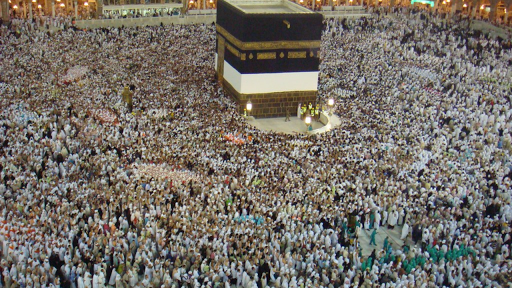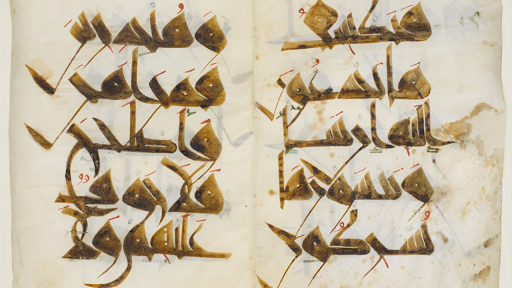Although the Shiʿah numbered approximately 130 million of some 1.5 billion Muslims worldwide within the early 21st century, Shiʿism has exerted an excellent influence on Sunni Islam in several ways. The veneration during which all Muslims hold ʿAlī and his family and therefore the respect shown to ʿAlī’s descendants (who are called sayyids and sharīfs) are obvious evidence of this influence.
Ismāʿīlīs
Besides the most body of Twelver (Ithnā ʿAsharī) Shiʿah, Shiʿism has produced a spread of more or less extremist sects, the foremost important of them being the Ismāʿīlī. rather than recognizing Mūsā because the seventh imam, as did the most body of the Shiʿah, the Ismāʿīlīs upheld the claims of his elder brother Ismāʿīl. One group of Ismāʿīlīs, called Seveners (Sabʿiyyah), considered Ismāʿīl the seventh and last of the imams. the bulk of Ismāʿīlīs, however, believed that the imamate continued within the line of Ismāʿīl’s descendants. The Ismāʿīlī teaching spread during the 9th century from North Africa to Sind, in India, and therefore the Ismāʿīlī Fāṭimid dynasty succeeded in establishing a prosperous empire in Egypt. Ismāʿīlīs are subdivided into two groups—the Nizārīs, headed by the Aga Khan, and therefore the Mustaʿlīs in Mumbai, with their own spiritual head. The Ismāʿīlīs are to be found mainly in East Africa , Pakistan, India, and Yemen.
In their theology the Ismāʿīlīs have absorbed relatively radical elements and heterodox ideas compared with other Shiʿis. The universe is viewed as a cyclic process, and therefore the unfolding of every cycle is marked by the arrival of seven “speakers”—messengers of God with scriptures—each of whom is succeeded by seven “silents”—messengers without revealed scriptures; the last speaker (the Prophet Muhammad) is followed by seven imams who interpret the desire of God to humanity and are, during a sense, above the Prophet because they draw their knowledge directly from God and not from the Angel of Inspiration. During the 10th century, certain Ismāʿīlī intellectuals formed a association called the Brethren of Purity, which issued a philosophical encyclopaedia, The Epistles of the Brethren of Purity, aiming at the liquidation of positive religions in favour of a universalist spirituality.
Aga Khan III (1887–1957) took several measures to bring his followers closer to the most body of the Muslims. The Ismāʿīlīs, however, still haven't mosques but jamāʿat khānahs (“gathering houses”), and their mode of worship bears little resemblance thereto of the Muslims generally.
Related sects
Several other sects arose out of the overall Shiʿi movement—e.g., the Nuṣayrīs (ʿAlawites), the Yazīdīs, and therefore the Druze—which are sometimes considered as independent from Islam. The Druze arose within the 11th century out of a cult of deification of the Fāṭimid caliph al-Ḥākim.
During a 19th-century anticlerical movement in Iran, a particular ʿAlī Moḥammad of Shīrāz appeared, declaring himself to be the Bāb (“Gate”; i.e., to God). At that point the climate in Iran was generally favourable to messianic ideas. He was, however, bitterly opposed by the Shiʿi ʿulamāʾ (council of learned men) and was executed in 1850. After his death, his two disciples, Ṣobḥ-e Azal and Bahāʾullāh, broke and went in several directions. Bahāʾullāh eventually declared his religion—stressing a humanitarian pacificism and universalism—to be an independent religion outside Islam. The Bahāʾī faith won a substantial number of converts in North America during the first 20th century.
Other groups
Sufism
Islamic mysticism, or Sufism, emerged out of early ascetic reactions on the a part of certain religiously sensitive personalities against the overall worldliness that had overtaken the Muslim community and therefore the purely “externalist” expressions of Islam in law and theology. These persons stressed the Muslim qualities of ethical motivation, contrition against overworldliness, and “the state of the heart” as against the legalist formulations of Islam.
The Aḥmadiyyah
In the latter half the 19th century in Punjab, India, Mirza Ghulam Ahmad claimed to be an ingenious prophet. initially a defender of Islam against Christian missionaries, he then later adopted certain doctrines of the Indian Muslim modernist Sayyid Ahmad Khan—namely, that Jesus died a natural death and wasn't assumed into heaven because the Islamic orthodoxy believed which jihad “by the sword” had been abrogated and replaced with jihad “of the pen.” His aim appears to possess been to synthesize all religions under Islam, for he declared himself to be not only the manifestation of the Prophet Muhammad but also the Second Coming of Jesus, also as Krishna for the Hindus, among other claims. He didn't announce, however, any new revelation or new law.
In 1914 a schism over succession occurred among the Aḥmadiyyah. One group that seceded from the most body, which was headed by a son of the founder, disowned the prophetic claims of Ghulam Ahmad and established its centre in Lahore (now in Pakistan). the most body of the Aḥmadiyyah (known because the Qadiani, after the village of Qadian, birthplace of the founder and therefore the group’s first centre) evolved a separatist organization and, after the partition of India in 1947, moved their headquarters to Rabwah in what was then Pakistan .
Both groups are noted for his or her mission , particularly within the West and in Africa. Within the Muslim countries, however, there's fierce opposition to the most group due to its claim that Ghulam Ahmad was a prophet (most Muslim sects believe the finality of prophethood with Muhammad) and since of its separatist organization. Restrictions were imposed on the Aḥmadiyyah in 1974 and again in 1984 by the Pakistani government, which declared that the group wasn't Muslim and prohibited them from engaging in various Islamic activities.
Livequranforkids
We are providing the educational service of
Learn quran online, female quran teacher,quran for kids, quran reading,
quran memorization for kids, quran translation,online quran,
quran for kids in USA, quran online and Online quran academy.

